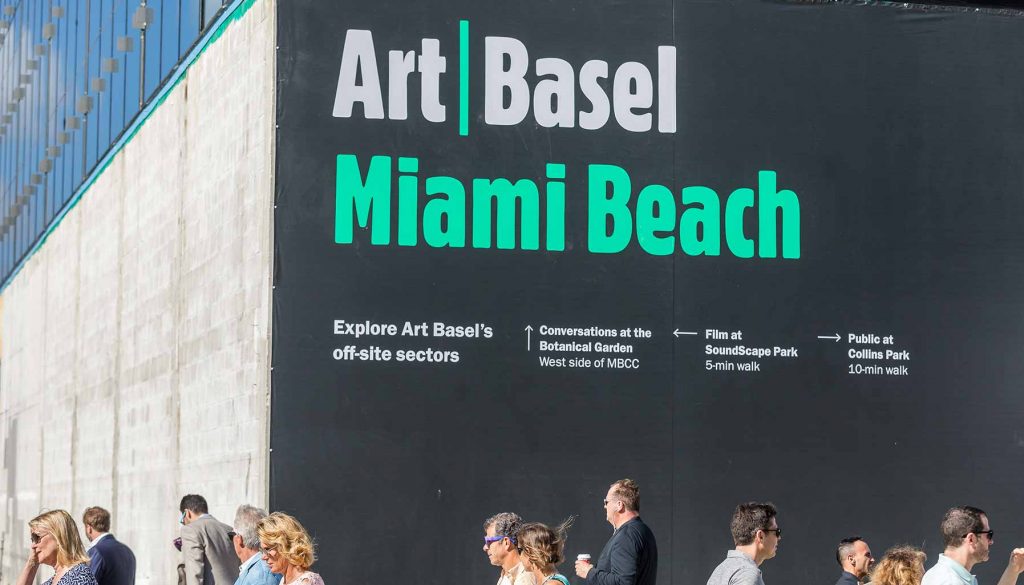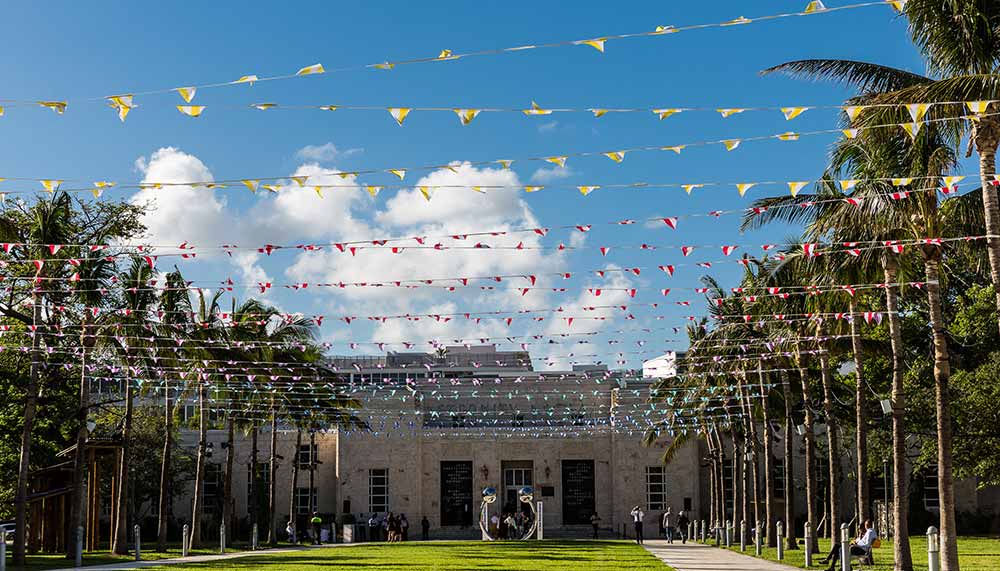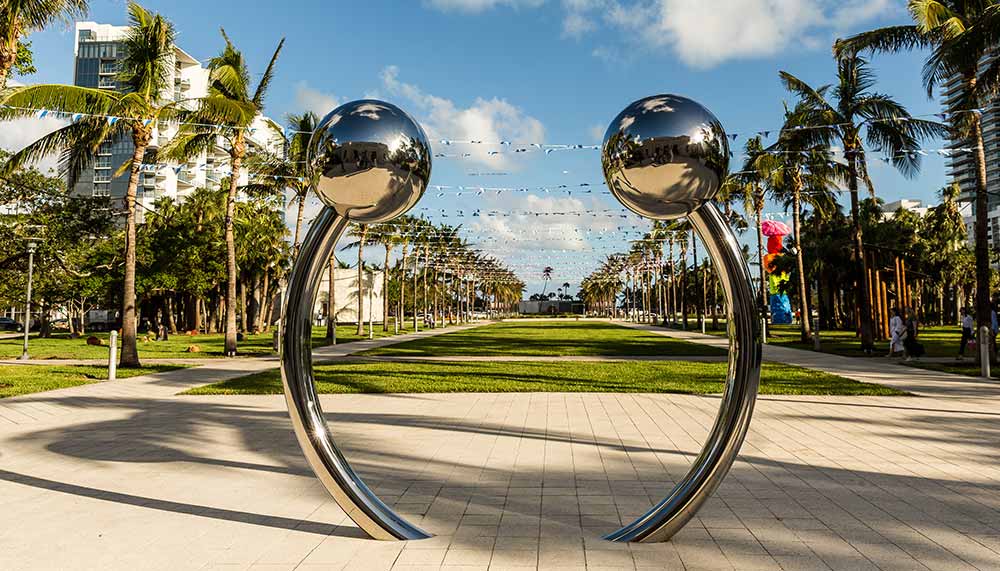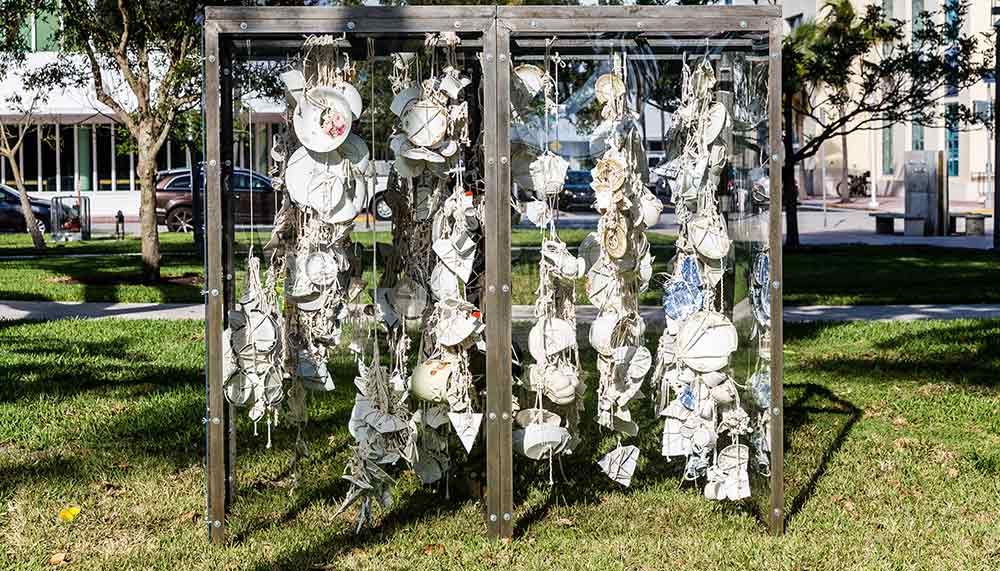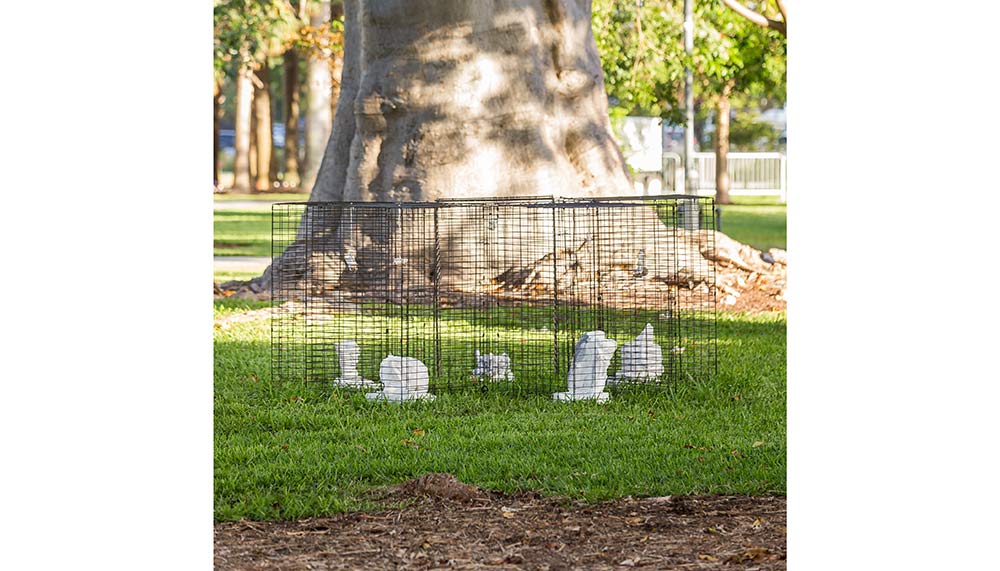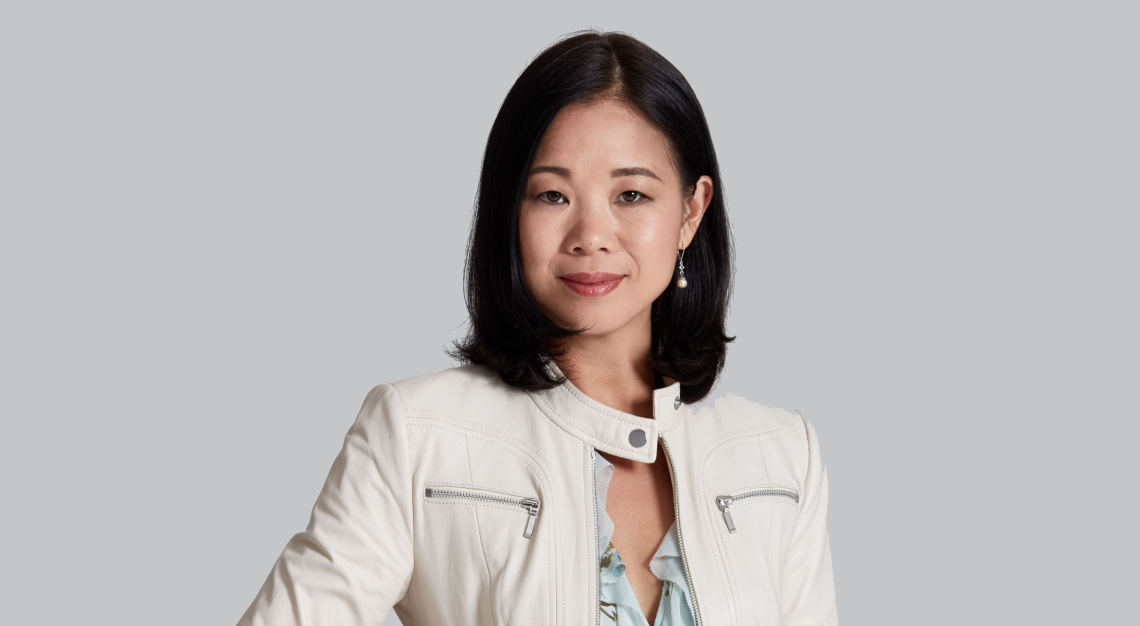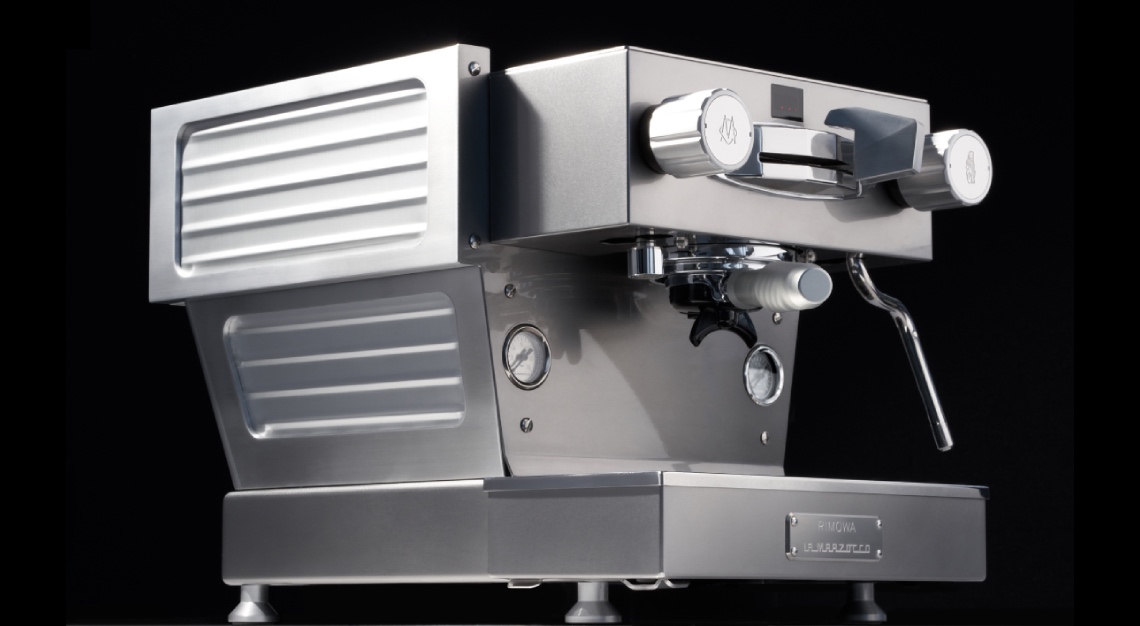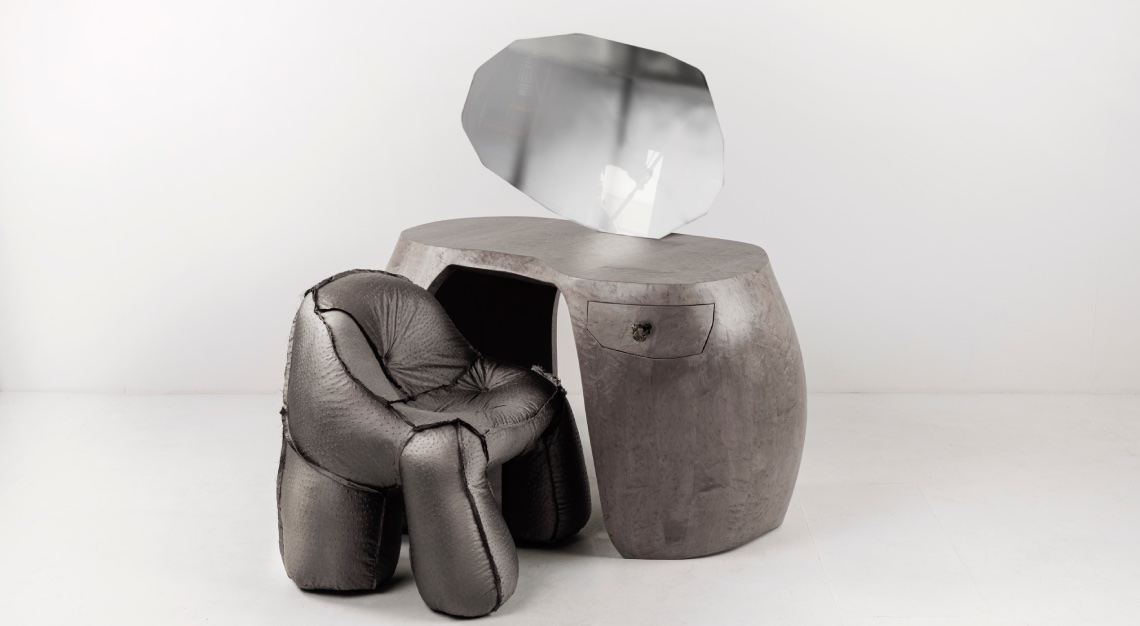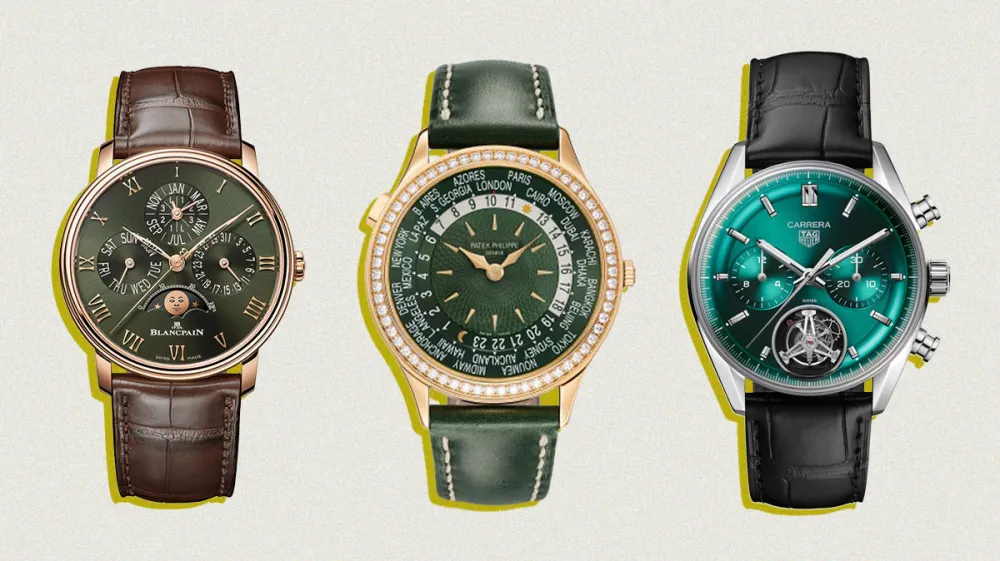Abstractions of the Artist Allegory
This year’s Art Basel Miami Beach showcase featured the works of leading and emerging international artists via the mediums of prodigious sculptures and installations in Collins Park. And for the first time, a Public sector was curated by independent curator and critic Philipp Kaiser. The curator selected the site-responsive works to explore the boundaries of physical space and extrapolate this to the concept of metaphysical space, elucidating dialogue on social constructs and the impact therein.
Here are some of the highlights of the show that also intended to provoke critical thought while exploring territorial boundaries.
Les Guirlandes by Daniel Buren (1938)
One of the centrepieces of this year’s sector, this is a restaging of the historic work which originally debuted 35 years prior in 1982 at Documenta 7 in Kassel, Germany. Striped decorative flag garlands are strung across the park, as loudspeakers play chronologically-timed musical pieces.
This is interspersed with (and interrupted by) the systematic recitation of words in 14 different languages. The French conceptual artist’s thought-provoking and controversial work offers a critique on nationalism, whilst simultaneously anatomising the delicate balance between the use of space and its inherent appropriation. The result is a seamless entwining of life and art, with illusion metamorphosising into allusion.
Navel of the World by Daniel Knorr (1968)
Daniel Knorr’s work is a reference to Piero Manzoni’s upside-down pedestal Socle du Monde from 1961, which placed viewers on the underside of the earth – thereby being in natural opposition to the ‘top of the world’. Navel of the World is a redux of Manzoni’s practice of demarcating a singular point, thereafter situating it within a political sphere.
The phrase heralds the intersection of mystical coordinates in many cultures. In addition, the act — and art — of piercing itself was also tied to class status and cultural backgrounds. By piercing ‘the most important point of the world’, the Romanian artist anthropomorphises earth, giving it a humanistic and vulnerable skein. This distills the sculpture to the level of contemporary body consciousness, bringing the observer that much closer to its humanistic message.
Domestic Violence: Matriz Nula by Manuela Viera-Gallo (1977)
Chilean artist Manuela Viera-Gallo’s mixed media installation hones in on the concept of destruction. The vulnerability implicit to the image of shattered, irrevocably-damaged everyday objects speaks to larger social issues on abuse, dovetailing into the trials and tribulations of survivors of domestic violence.
Fragmented and sharp-edged broken ceramic dishes are lashed together in an overloaded sequence, in a testament to the obvious – and yet often shamefully hidden – agitation of the soul. Impending danger is just beyond the horizon, yet the images hang inert, unmoving. The dichotomy of the unending cycle of abuse and concealment is found in the intersecting shards of the most banal of objects. The artist extrapolates what happens behind closed doors to the violence that happens on a global scale, seeking your connection and attention via the broken chaos.
Jaulas by Harold Mendez (1977)
First-generation American Harold Mendez groups found animal cages in a circular composition to present the narrative of entropy intertwined with existence and freedom. Presenting narratives of conflict, each cage is home to a stone sculpture of an animal that has been stridently, shockingly decimated. Broken apart and deteriorated, only fragments of each construct remain, as if the animals have succumbed to an inevitable fight to the finish.
The cages face the viewer, separate and yet close enough that viewer and victim are almost one, and therefore interchangeable. This is a stark reminder that the animals were once witnesses as well. Through the narratives of conflict, Mendez signals the inherent violence that exists within the human condition. And ultimately, with the deadly chaos occurring in the confines of a cage, the artist addresses the very nature of our freedom and existence.


